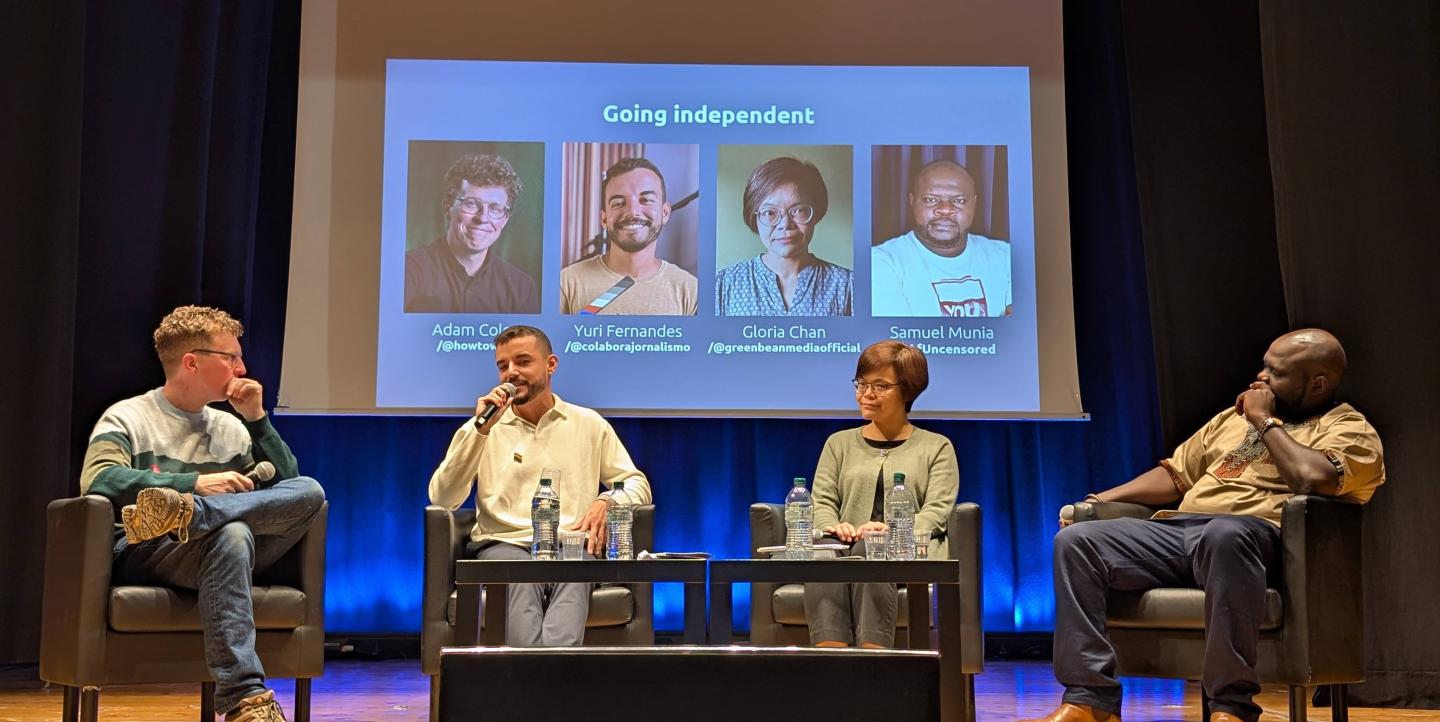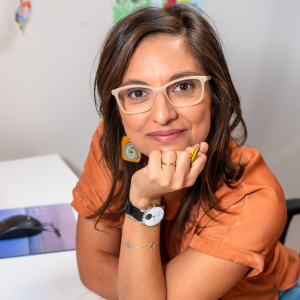The media landscape is in constant flux, presenting unique challenges and opportunities for independent journalists. Finding sustainable models in this environment while building engaged audiences requires innovation and adaptability.
At the 2025 International Journalism Festival in Perugia, Italy, winners of ICFJ’s inaugural News Creator Award discussed how they successfully navigate the terrain. They shared concrete strategies focused on content, community, storytelling and sustainability, offering valuable insights for peers seeking to connect meaningfully with audiences and solidify their place in the evolving media ecosystem.
The foundation: Content that connects
In an overwhelming sea of information, the core differentiator for independent journalists often lies in the quality and relevance of their work. Panelists agreed that creating content that genuinely resonates is the foundation for any successful audience-building effort. It’s about more than just disseminating facts; it’s about producing work perceived as valuable and necessary by the target audience.
As Adam Cole, freelance video and audio producer, put it, creating valuable and needed content is the essential first step to attract and retain readers or viewers. Gloria Chan, co-founder of Green Bean Media, agreed: “We believe in the quality and diversification of our content.”
The commitment to quality involves providing depth, unique analysis, and perspectives that larger outlets might overlook or that audiences struggle to find elsewhere. When journalists successfully identify and fill these informational or analytical gaps, they build intrinsic value.
This value proposition, Chan explained, is often the catalyst for organic growth, meaning audiences expand naturally through word-of-mouth and genuine interest, fostering a more loyal and invested audience base over time.
The importance of community engagement
Beyond producing quality content, truly successful independent journalism often hinges on cultivating a sense of community around the work. The panelists stressed the importance of a shift away from a purely transactional model (delivering news) toward a more relational one, in which audience interaction drives the creative process. Yuri Fernandes, partner and general director at the Brazilian journalism platform, #Colabora, shared how initial audience engagement on YouTube spurred him to produce more content to keep the conversation going.
Building an audience begins where your audience congregates, so being present on multiple platforms, such as a primary website, relevant social media channels, email newsletters, and potentially even offline events like screenings or workshops, is important to reach a bigger crowd. Content should be tailored effectively for each platform to maximize impact, said Samuel Munia, the head of the investigative desk at Africa Uncensored. For example, concise, short videos work well for Instagram, while long-form videos suit YouTube best. Also, maintaining a regular, predictable publishing schedule signals reliability and keeps the audience habitually connected. Consistency and quality in production are key, Munia said.
Journalists can cultivate a sense of community by responding thoughtfully to comments, actively soliciting feedback, and creating dedicated spaces for discussion, whether through comment sections, forums, or social media groups. This consistent interaction helps build connection and loyalty that transform passive readers into active participants.
Munia suggested incorporating audience feedback, questions, or user-generated content into the reporting process. “When stories go viral, audiences come back to us, giving us more stories. The audiences are part of the ideation and production process.” This approach, he explained, strengthens the bond and surfaces valuable story ideas and diverse perspectives, enriching the journalism and making the audience feel genuinely heard and valued.
Storytelling as a core strategy
In today's saturated information environment, the ability to craft compelling narratives is a powerful tool for independent journalists seeking to reach their audience. Munia highlighted the importance of "crafting the story arc and tapestry of storytelling" to keep audiences engaged from start to finish. Embedding facts within a well-told story makes information more memorable, relatable and impactful.
Focusing on unique angles, humanizing complex issues through personal stories, and exploring underrepresented perspectives allow independent journalists to differentiate their work. These compelling narratives naturally encourage sharing within social networks. Fernandes shared an example in which a season of his show went viral, generating thousands of comments and people sharing photos of their families, showing the deep emotional connection created. This organic amplification is invaluable; peer-generated content often carries greater trust and credibility.
In all reporting and audience interactions, powerful storytelling must be built on rigorous ethical standards. Maintaining accuracy, transparency about methods, fairness to sources, and clear corrections when errors occur are non-negotiable, Cole and Munia noted. Munia stressed the importance of protecting sources to build trust and encourage others to come forward.
Sustainability and measuring true impact
The long-term viability of independent journalism depends on sustainable operational models. Journalists must diversify their income sources beyond traditional advertising or single grants, as relying on one funding stream creates vulnerability. The panel suggested exploring multiple avenues, such as reader memberships or subscriptions, direct donations, sponsorships, and targeted advertising.
This approach requires journalists to develop business acumen alongside their reporting skills. Panelists encouraged journalists to overcome any feelings of incompetence they may have about commerce, echoing a quote by Jimeh Saleh, editor at BBC News: "Even though you're a journalist, and content is king, you need to think as a business person.” Cole shared his method: framing budgets as data to investigate, making the financial side more approachable.
When it comes to defining success, the panelists warned that doing so solely through quantitative metrics like page views or subscriber numbers can be limiting. Munia advocated for a broader view of impact, considering the real-world effects of their journalism. Is the work informing public discourse, empowering communities, holding individuals accountable, or contributing to tangible policy changes? Recognizing and articulating this qualitative impact is important for keeping motivated and demonstrating value to funders and the audience.
The path requires a good dose of resilience. Initial efforts might feel slow or discouraging, Cole noted, so it is important to build a supportive network or begin the project with a partner you can lean on. "Every project I've ever done, I've always wanted to have started earlier,” he said. “If you can start now, you’ll start to encounter some of the challenges and learn about what you need to know to succeed. So my one piece of advice is: Don’t wait.”
“Believe in yourself and your intuition,” added Chan. “What you believe in, you can work on. There is nothing you can't try.”
Munia advised journalists to choose a niche, maintain consistency and quality, and establish credible partnerships. “Don’t sit in a comfort zone,” he urged. “Don’t be satisfied. Keep going.”
“You need to fall in love with your content,” said Fernandes. “When I started, I didn't have financial support, but I had great stories. And the story is more important than other things.”
Photo courtesy of Manuela Callari.


